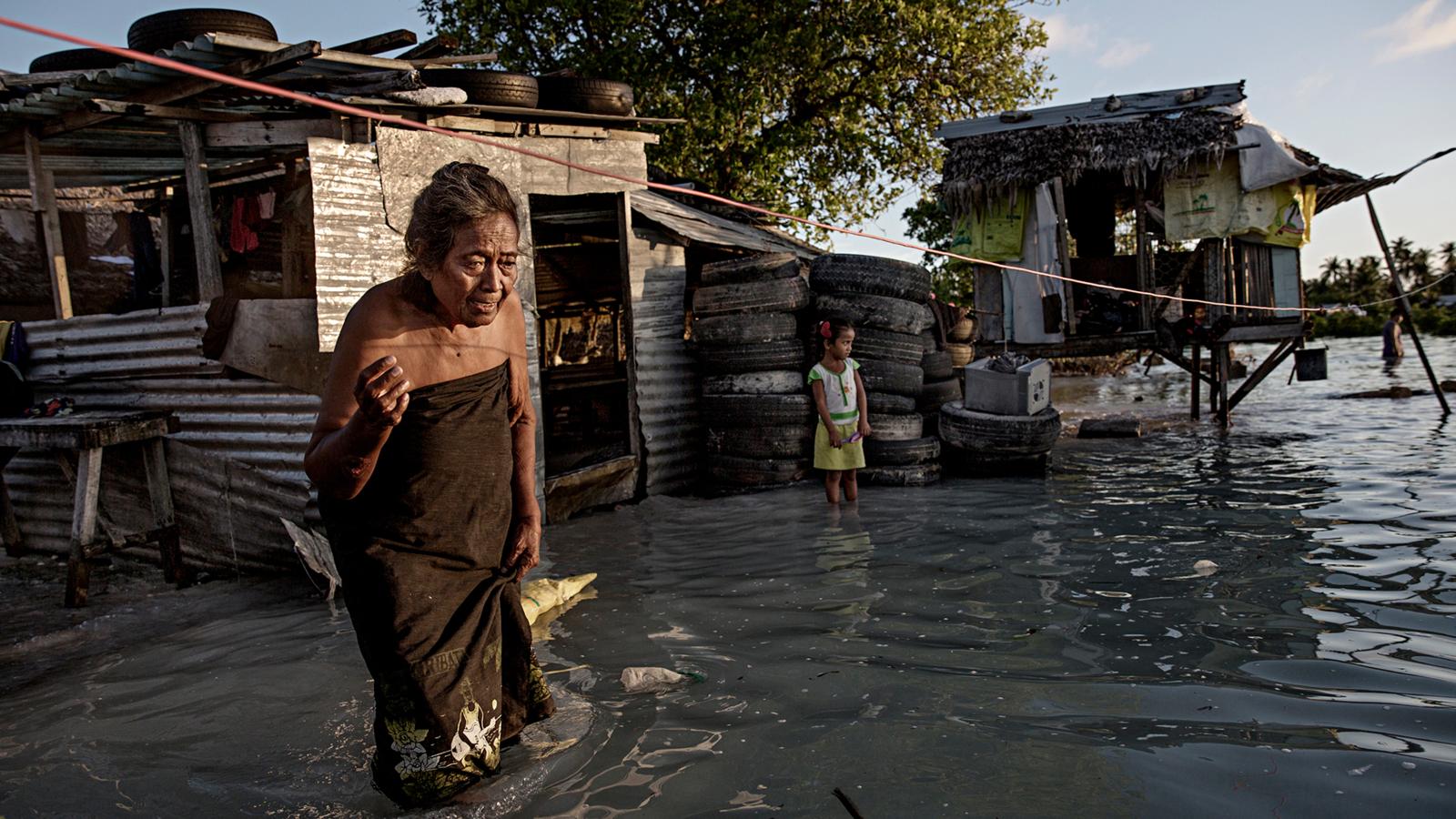Climate Change and Climate Refugees: the new challenges of the Century
1. Introduction
The 1951 Refugee Convention of Geneva spells out who a refugee is and the kind of legal protection, other assistance, and social rights he/she should receive from countries that have signed the document.
Even if the definition of “refugee” is linked to the concepts of “persecution, war or violence”[1], the UN has expressed growing concern about the lack of protections for people forced to escape from their countries because of natural disasters, taking action to support and develop resilience in countries potentially affected by climate-related stress.
2. The phenomenon of Climate Refugees and the Right to life
“Climate refugee” is a term used in the media and other public discussions, but it does not exist in international law. After several natural disasters happened in 1984, such as the earthquakes in India and New Zealand, floods’ disasters in Mexico and China, the UN Environment Programme (UNEP) expert Essam El-Hinnawi defined environmental refugees as “‘those people who have been forced to leave their traditional habitat, temporarily or permanently, because of marked environmental disruption (natural and/or triggered by people) that jeopardized their existence and/or seriously affected the quality of their life”[2].
In March 2009, the UN Human Rights Council passed its first resolution to address human rights and climate change, explaining how climate change-related impacts have a range of implications, both direct and indirect, for the effective enjoyment of human rights[3]. The first implication is the impossibility to respect the right to have a dignified life, followed by the need for measures to protect and, where necessary, relocate entire populations.
So far, the escamotage to lee climate refugees has been the request for asylum due to humanitarian protection. This is what happened in Teitiota v New Zealand, a case considered relevant for the impact of climate change on the international obligation of non-refoulement.
Ioane Teitiota, from Kiribati, applied for asylum in New Zealand due to disasters caused by rising water: violent land disputes, a lack of fresh drinking water, an inability to sustain a livelihood via agriculture due to soil salinization, and flooding. By the way, Teitiota returned from New Zealand with his family because the application was denied by the New Zealand Immigration and Protection Tribunal, and the subsequent domestic appeals were unsuccessful.
In 2016 [4], The UN Human Rights Committee (HRC) argued his removal placed New Zealand in breach of the right to life protected by Article 6(1) of International Covenant on Civil and Political Rights (ICCPR) because Teitiota was exposed to “a real risk of irreparable harm to his right to life in Kiribati”[5]. Only if this risk could be avoided and suitably established, a non-refoulement obligation derived from Article 6(1) was opposable against and breached by, New Zealand [6]. Moreover, the obligation to protect life under ICCPR has to be addressed by the real possibility of States to guarantee access to basic economic and social entitlements, such as ‘an adequate supply of safe and potable water’, and ‘minimum essential food’[7]. However, New Zealand proved the absence of a real risk of irreparable harm to his right to life because “there was still time left for the Kiribati authorities and the international community to intervene and to protect the population”[8], including “through relocation”[9].
3. The European Union and the improvement of asylum’s measures
In the last five years, the growth of asylum seekers has become one of the main issues the European Union has to deal with.
In the Resolution of 12 April 2016 on the situation in the Mediterranean and the need for a holistic EU approach to migration, the European Parliament stressed the seriousness of Article 80 TFEU for the advancement of asylum’s measures to face humanitarian protection’s requests. Just in 2019, the Parliamentary Assembly of the Council of Europe called, precisely, for measures to “defense people who are forced to move as a consequence of climate change”. The need for solutions, such as circular migration schemes and preferential access for workers coming from regions seriously affected by climate change, animated several debates on security and responsibility of each EU Member State about the improvement of asylum’s measures. The European Parliament tried to negotiate with the European Council, that was not able to agree on reform measures about the Common European Asylum System (CEAS), and in particular, to the refinement of the Dublin Regulation about the criteria to determine which EU member state is responsible for examining an asylum application. Thus, not a single measure proposed by the European Parliament to reform the CEAS was adopted.
While there is no one European act that regulates the new frontier of environmental-migration, some Member States have set up a mechanism of protection for persons who flee an ecological disaster. Under Swedish[10] law, for example, a person who has left his native country because of an environmental disaster may also be qualified for asylum. This category is described as persons in the “need for protection”.
In sum, points of view vary between the European institutions, experts, and the Council of Europe but there is a clear awareness of the problem and there is a will to find an agreement, sharing ideas and new solutions. So far, the European Commission created the channel “Climate change and you”, a platform that describes the most important climate-related initiatives taken by the EU. One of the projects is the creation of a board made by one exponent per Member State, proposing new measures for environmental refugees, using the guidelines pointed out by Greens in the European Parliament in 2013.
4. Conclusion
Due to the acceleration of the climate crisis over the last 10 years, people are increasingly being displaced by disasters, desertification, and coastal erosion linked to climate change. The International Community is a warning to take seriously climate change impacts on human life.
In the European Union, the issue is finally starting to be discussed. New projects are on the table, but it is required the collaboration of all EU Member States in new approaches to face the migration trend related to natural disasters.
[1] Article 1 Refugee Convention of 1951
[2] El-Hinnawi, E. (1985). Environmental Refugees. Nairobi, Kenya: United Nations Environmental Programme
[3] G.A. Res. 10/4, U.N. Doc. A/HRC/10/L.11 https://www2.ohchr.org/english/bodies/hrcouncil/docs/10session/A.HRC.10.L.11.pdf
[4] HRC Individual Communication No. 2728/2016 http://climatecasechart.com/non-us-case/un-human-rights-committee-views-adopted-on-teitiota-communication/
[5] Para 9.3 of HRC Individual Communication No. 2728/2016
[6] Para. 12 of HRC General Comment 31 (2004)
[7] Para. 43 of Committee on Economic Social and Cultural Rights’ (CESCR) General Comment 14 (2000) on the ICESCR right to health https://www.refworld.org/pdfid/4538838d0.pdf
[8] Para. 9.13 of HRC Individual Communication No. 2728/2016
[9] Para 9.12 of HRC Individual Communication No. 2728/2016
[10] Aliens Act, Chapter 3 Section 3 https://www.government.se/contentassets/784b3d7be3a54a0185f284bbb2683055/aliens-act-2005_716.pdf
Angelica De Vito, dopo essersi laureata a pieni voti presso la Facoltà di Giurisprudenza di Napoli “Federico II”, ha frequentato la SIOI per il Master “Relazioni Internazionali e Protezione Umanitaria”, seguito da un LLM sui mezzi di risoluzione delle dispute internazionali presso l’Università “Queen Mary of London”. E’ vincitrice della borsa di studio “Diritti Umani – Alessandro Pavesi 2020-2021” e del concorso “Fulbright 2020-2021″per il progetto di studio “Climate Change and Displacement” presso le seguenti Università: “Harvard University”, Massachusetts; “Columbia University”, New York; “Pace University”, New York.




